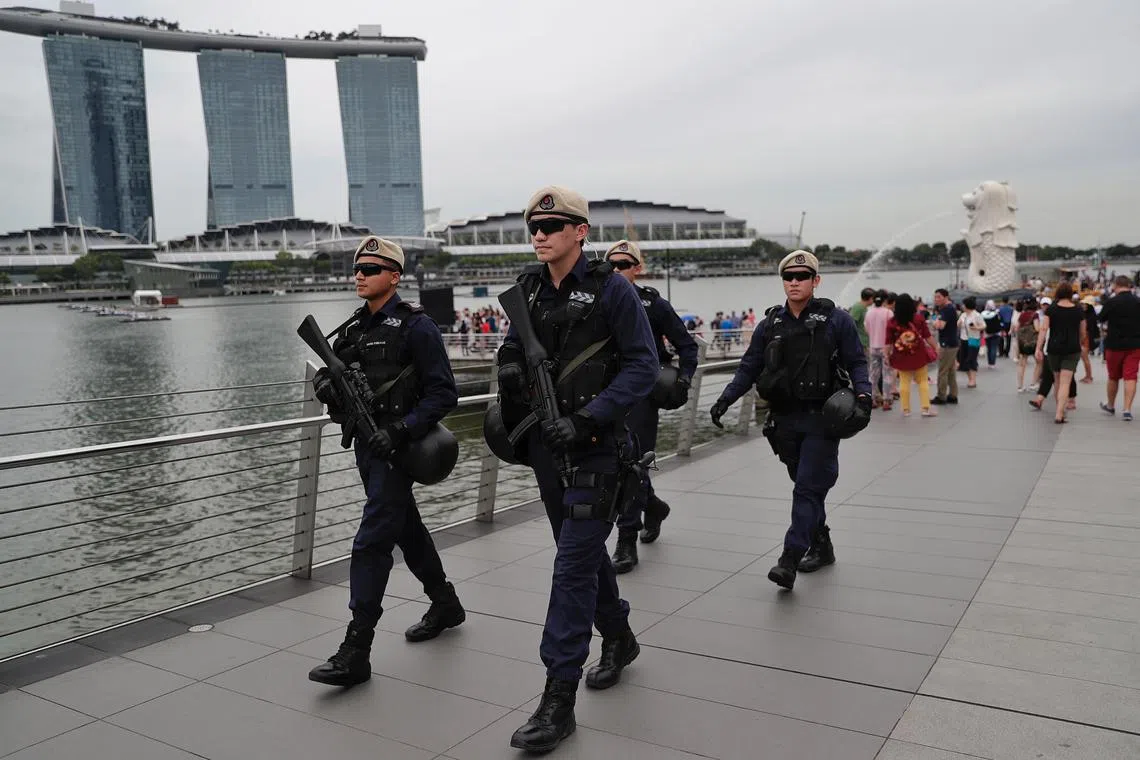Barriers, bollards, police patrols among measures to prevent vehicular ramming attacks: Shanmugam
Sign up now: Get ST's newsletters delivered to your inbox

The Ministry of Home Affairs regularly conducts assessments to identify potential threats and areas of vulnerability.
PHOTO: ST FILE
Follow topic:
SINGAPORE - To prevent vehicular ramming attacks, organisers of events that attract large crowds may be required to deploy barriers, and some buildings may need to install vehicle bollards.
Minister of Home Affairs K. Shanmugam told Parliament in a written response on Feb 26 that the ministry regularly conducts assessments to identify potential threats and areas of vulnerability.
He was responding to a question from Mr Gerald Giam (Aljunied GRC), who asked the Ministry of Home Affairs (MHA) about measures to prevent vehicular ramming attacks in crowded areas, such as in nightlife districts and at public events.
Mr Shanmugam said MHA implements practicable measures from their assessments.
He set out some of these measures in his reply. For events that attract large crowds, or are assessed to be of higher security risk, the police require organisers to put in place security measures.
Depending on the nature and location of the event, these measures could include concrete blocks, crash-rated barriers and restricted entry of vehicles.
Buildings assessed to be iconic or have high public footfall must incorporate in its design and construction security measures such as vehicle bollards and closed-circuit television.
Existing buildings must implement these measures when they undergo major renovation works.
The minister said the police also conduct patrols at events and areas of high footfall to deter attacks and enable swifter responses, and noted that the police had in 2017 introduced In-Situ Reaction Teams (IRTs), or quick-response teams to boost counter-terrorism efforts.
IRTs have been deployed at locations such as Orchard Road and Marina Bay.
Mr Shanmugam said the police regularly engage building owners and industry associations to provide advice on how to mitigate vehicular threats, but added that public vigilance is also “extremely important”.
He said it was not appropriate to set out all the measures that are implemented.
“The measures we take must also balance the needs of a free and open society, and the needs of security.
“For example, the entire city cannot be turned into a cantonment, nor is this possible,” Mr Shanmugam added.
Mr Giam’s question comes in the wake of vehicular ramming attacks around the world in recent months.
In Munich, a car driven by an Afghan asylum seeker ploughed into a crowd on Feb 13
On Jan 29, two cars were caught on video ramming a crowd of people outside a nightclub
Malaysian police arrested five men and said three other suspects remain at large. The incident was sparked by a prior disagreement between the suspect and the victims.
Christine Tan is a journalist at The Straits Times reporting on crime, justice and social issues in Singapore.


